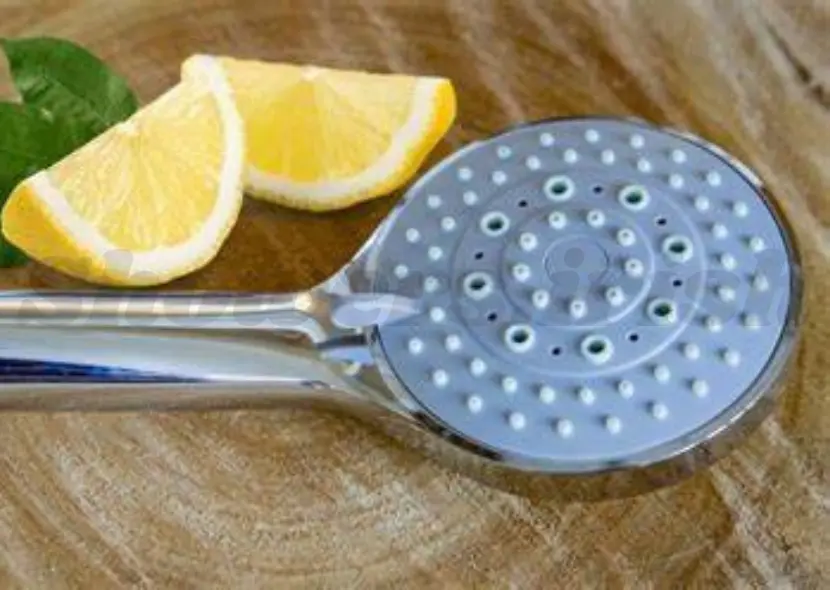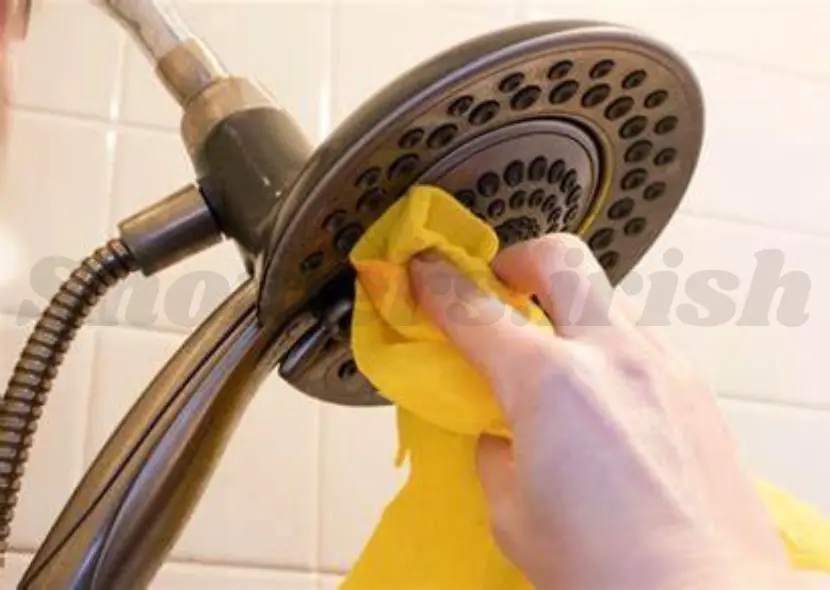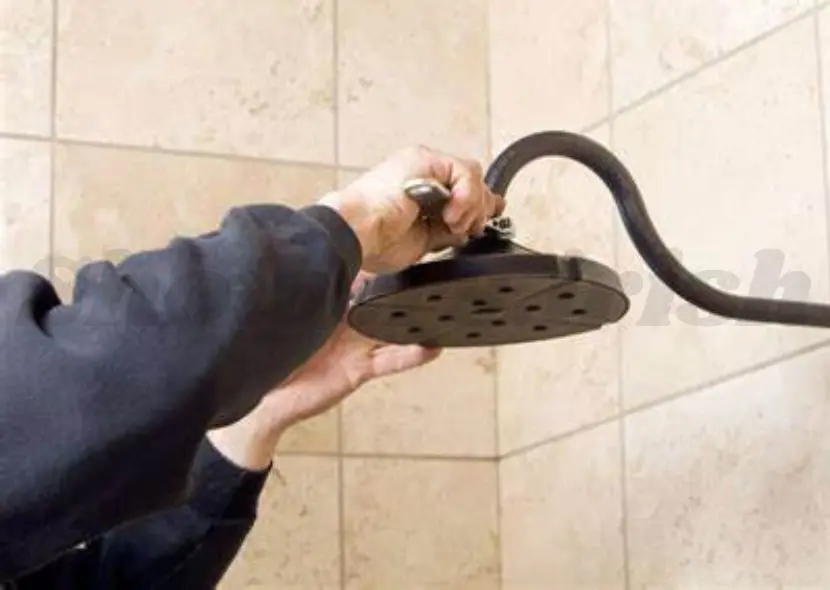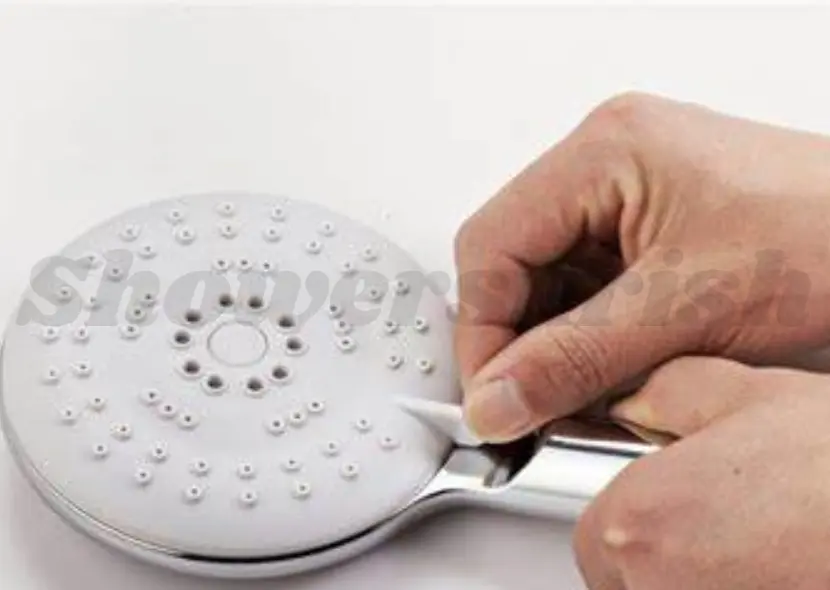Maintaining a clean and functional showerhead is crucial for both hygiene and optimal performance. Over time, shower heads can accumulate mineral deposits, grime, and soap scum, which can affect water flow and overall efficiency. In this comprehensive guide, we will delve into the best practices for cleaning your shower head, focusing on natural solutions like lemon juice, chrome polishing techniques, and methods for opening the shower head for a thorough clean. Let’s get started!
How to Clean a Shower Head with Lemon Juice
Lemon juice is a powerful, natural cleaning agent that effectively dissolves mineral deposits and grime. Its acidic nature makes it ideal for tackling buildup without the use of harsh chemicals.

Why Lemon Juice?
Lemon juice contains citric acid, which is excellent for breaking down calcium and lime deposits that commonly build up in shower heads. It’s also a natural, eco-friendly option that’s gentle on your fixtures.
Preparation for Cleaning
Before you start, make sure to gather your materials. You’ll need:
- Fresh lemons or bottled lemon juice
- A plastic bag (if cleaning without disassembling)
- Rubber bands
- A small brush or toothbrush (optional)
Cleaning Process
- Detach the Shower Head: If possible, unscrew the shower head from the arm. This will make the cleaning process easier and more thorough.
- Apply Lemon Juice: If you have fresh lemons, cut one in half and squeeze the juice directly onto the shower head. Alternatively, pour bottled lemon juice into a small bowl.
- Soak the Shower Head: Submerge the shower head in the lemon juice or wrap it with a plastic bag filled with the juice. Secure the bag with rubber bands to ensure it stays in place.
- Wait and Rinse: Allow it to soak for at least 30 minutes to an hour. After soaking, scrub any remaining deposits with a brush, then rinse thoroughly with warm water.
Tips and Tricks
- For stubborn deposits, you can use a mixture of lemon juice and baking soda to form a paste. Apply this paste to the affected areas and let it sit before scrubbing.
- Always rinse the shower head thoroughly to remove any residual lemon juice, which could cause corrosion over time.
How to Clean Chrome Shower Heads
Chrome shower heads are known for their sleek appearance, but they require specific care to maintain their shine and prevent tarnishing.

Understanding Chrome Finish
Chrome is a metal plating that adds a shiny, reflective surface to shower heads. It’s relatively resistant to rust but can become discolored or scratched if not cleaned properly.
Recommended Cleaning Solutions
- Mild Detergents: Use a gentle dish soap mixed with warm water. This solution is effective in removing grime without damaging the chrome finish.
- Vinegar Solution: For more stubborn spots, mix equal parts of vinegar and water. Vinegar’s acidity helps dissolve mineral deposits without being too harsh on the chrome.
Cleaning Steps
- Prepare the Cleaning Solution: Mix a few drops of mild detergent in a bowl of warm water or prepare a vinegar solution.
- Apply the Solution: Using a soft cloth or sponge, apply the cleaning solution to the chrome surface. Avoid using abrasive pads or brushes, which can scratch the chrome.
- Wipe and Rinse: Wipe the surface with a clean, damp cloth to remove any soap or vinegar residue. Dry thoroughly with a soft towel to prevent water spots.
Preventing Damage
- Avoid Harsh Chemicals: Stay away from bleach or ammonia-based cleaners, which can damage the chrome finish.
- Regular Maintenance: Regularly wipe down your chrome shower head to prevent buildup and maintain its shine.
How to Open a Shower Head for Cleaning
Deep cleaning sometimes requires disassembling the shower head to reach all the internal components and remove any hidden debris.

Tools and Materials Needed
- Adjustable wrench or pliers
- Cloth or towel (to protect the finish)
- Lubricant (if needed for stuck parts)
Disassembling the Shower Head
- Turn Off Water Supply: Before beginning, ensure that the water supply to the shower is turned off to prevent accidental leaks.
- Protect the Finish: Wrap the shower head in a cloth to protect the chrome or other finishes from scratches during disassembly.
- Unscrew the Shower Head: Use an adjustable wrench or pliers to gently unscrew the shower head from the arm. Turn counterclockwise and be cautious not to apply excessive force.
- Inspect and Clean: Once removed, inspect the shower head for any visible debris or buildup. Clean both the exterior and interior components using appropriate methods discussed earlier.
Reassembly
- Reattach the Shower Head: Once cleaned, reattach the shower head by screwing it back onto the arm. Ensure it’s tightened securely but avoid over-tightening.
- Turn On Water Supply: Restore the water supply and check for any leaks or issues.
Maintenance Tips
- Regular Inspection: Regularly check the shower head for signs of buildup or damage.
- Proper Cleaning: Clean the shower head as part of your regular bathroom cleaning routine to prevent major issues.
Conclusion
Maintaining your shower head is essential for ensuring a clean and efficient shower experience. By using natural cleaners like lemon juice, polishing chrome surfaces properly, and occasionally disassembling for a thorough clean, you can keep your shower head in excellent condition.
Remember, regular maintenance not only improves the performance of your shower head but also extends its lifespan. If you have any specific tips or tricks for maintaining your shower head, feel free to share them!
For more home maintenance tips and guides, consider exploring other related articles on our blog. Happy cleaning!
Frequently Asked Questions (FAQs)
1. How often should I clean my shower head?
It’s recommended to clean your shower head every 1-2 months to prevent buildup of mineral deposits and grime. Regular maintenance helps maintain optimal water flow and extends the lifespan of your shower head.
2. Can I use lemon juice on all types of shower heads?
Lemon juice is generally safe for most shower heads, but it’s best to avoid using it on brass or oil-rubbed bronze finishes. For chrome and stainless steel, lemon juice is effective and safe for removing mineral deposits.
3. What should I do if my shower head is clogged despite cleaning?
If cleaning doesn’t resolve the issue, try disassembling the shower head and checking for any debris or internal clogs. Soak it in a vinegar solution, and if necessary, use a small brush to clear out any remaining obstructions.
4. How can I prevent water spots on my chrome shower head?
To prevent water spots, dry your chrome shower head with a soft towel after each use. Regularly wiping it down with a mild detergent solution can also help maintain its shine and reduce the formation of spots.
5. Is it necessary to turn off the water supply when cleaning the shower head?
It’s not always necessary to turn off the water supply for routine cleaning. However, if you need to disassemble the shower head for a deep clean, turning off the water supply is a good precaution to avoid any leaks or spills.
Looking to keep your bathroom in top shape? Along with cleaning your shower head, don’t forget to maintain your rubber shower mats and curtains. Regular cleaning of these items is essential for a hygienic and fresh bathroom environment. Rubber mats and curtains can accumulate mold, mildew, and soap scum, which can be challenging to remove if left unchecked.
For a detailed guide on cleaning rubber shower mats and curtains, check out this comprehensive post:
How to Clean Rubber Shower Mats & Curtains.
This resource provides step-by-step instructions and helpful tips to ensure your bathroom accessories stay clean and well-maintained. Incorporating these cleaning practices into your routine will help you maintain a sparkling and inviting bathroom space.
Credit Website: www.ireland.ie/
